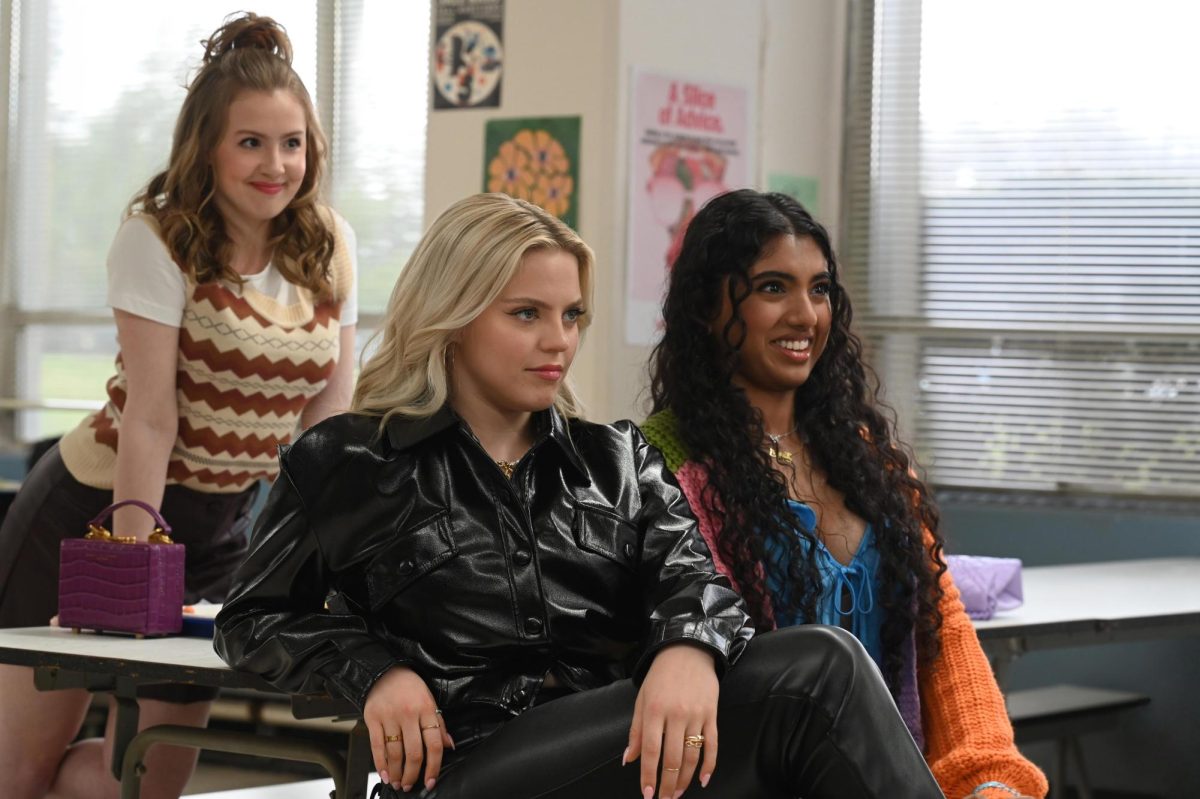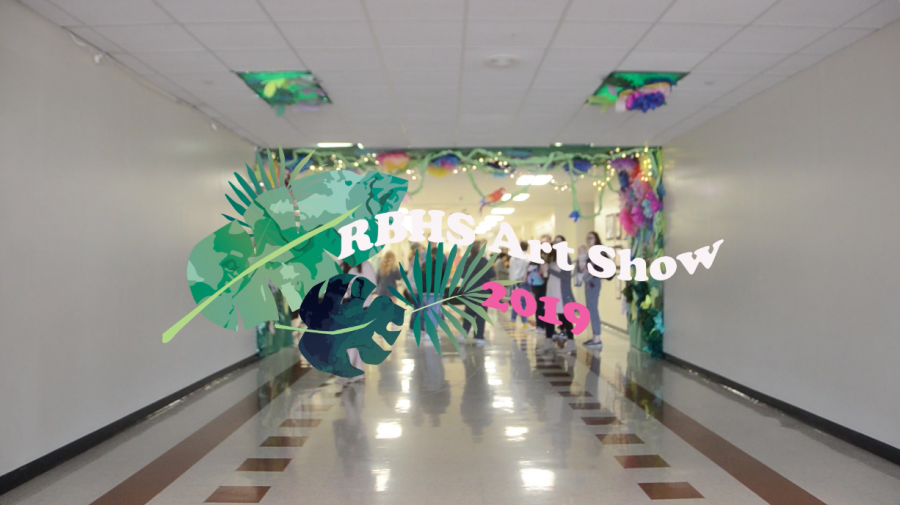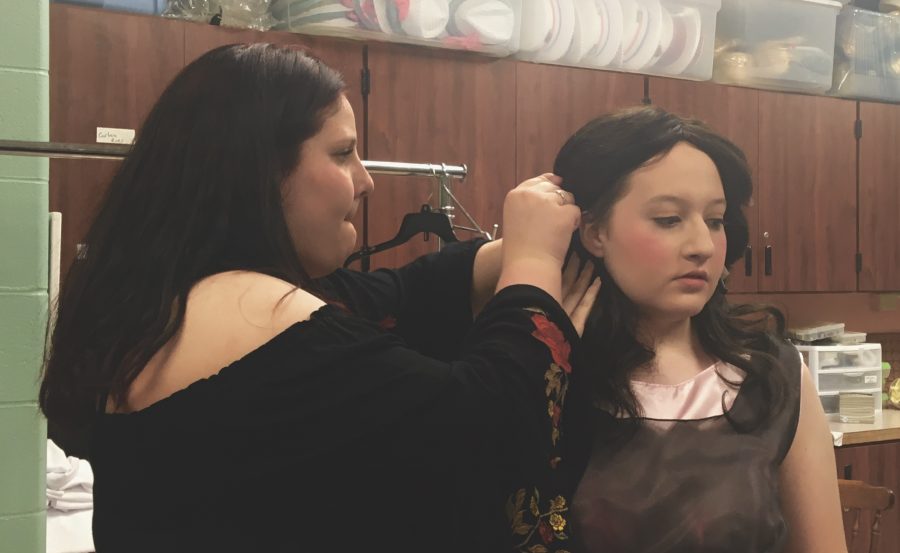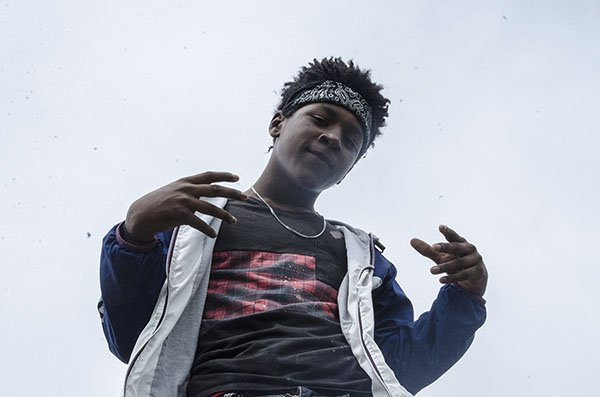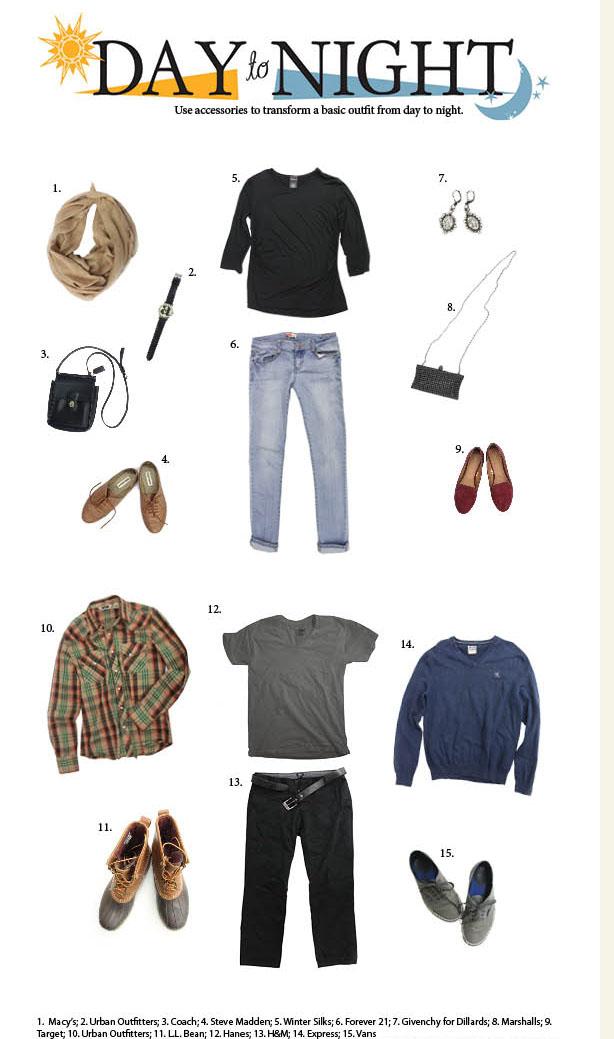
But if one were to take a look at the current fashion trends, it would be hard to decipher a trademark. It seems that the 2010s have a sprinkle of everything. Though items lprinted pants and oversized sweatshirts. Though there are similarities throughout the years, fashion is an ever-changing phenomenon.
ike high-waisted jeans, loose sweatshirts and oversized glasses are currently penetrating the fashion world, they found their beginnings in a different era.
Levi’s originally created high-waisted jeans in the 1940s so that women could work outside while maintaining an appropriate amount of modesty. The trend caught on in the 1950s and later returned in the 1980s, and now society once again finds high-waisted bottoms a popular fashion trend. Levi’s currently carries 296 different types of women’s high-waisted jeans, and the same history can be applied to nearly all fashion trends throughout the years.
Senior Kayla Doolady is an avid user of lookbook.nu, a fashion inspiration website, and is always looking for new ways to dress. Doolady won the 2013 Year of Dresses contest hosted by the store ModCloth. She attributes the repetition of fashion on those who desire uniqueness.
“I think a lot of times people just get sick of what’s current,” Doolady said. “I guess if you want to look different and if you want something that’s not current and you want to stand out, you’ll look to the past and see kind of what trends they have.”
Doolady believes much of the mixed trends of the fashion of the 2010s can be directly linked to the Internet. Because the Internet has gained so much popularity, it has become increasingly hard for individuals to stand out, so they retreat back to past trends.
Blue Bird Apparel is a St. Louis based company that puts modern spins on old-fashioned styles, like high-waisted skirts and dresses, and likes to mix “edgy with classic,” according to its website. The company sells women’s apparel not only to small boutiques but has also sold to chain stores like J.C. Penney and Sears. Blue Bird Apparel will also be participating in the Kansas City Fashion Week this spring. Anna Friss founded the company and is also the primary designer. Friss believes the recurring fashion trends can be attributed to the fascination and sentimentality that people hold with former eras.
“I think it’s a nostalgic thing,” Friss said in an email interview. “We romanticise time periods, and in a way … style lets us live in that time. Also, there’s only so many different hemlines, collars, pant rises, etc. that [trends are] bound to come back out of pure necessity.”
Wearing vintage clothing has become a renewed fashion trend as nostalgia associated with former eras becomes increasingly appealing. Katy Seibel, creator of the fashion blog Kansas Couture defines her style as vintage and loves experimenting with old-fashioned apparel.Though started it as a creative outlet, the blog has gained fame, and in 2010, Lucky Magazine featured Seibel and Kansas Couture in a spring trends spread. Seibel agrees that old trends seem to come back in style, but she thinks that they always return with a modern edge.
“Fashion is definitely cyclical,” Seibel said in an email interview. “I think artists of all kinds look to examples from the past for inspiration or as a creative starting point on which to build. I think it’s important to note that while trends definitely come in and out of style, they almost always re-emerge with a new spin, a reinvention of something that’s been done before.”
Penny loafers have recently emerged as a popular fashion trend; however, they were originally intended for Norwegian farmers in the 1930s. According to bassshoes.harborghb.com, in 1936 when loafers began exporting to the U.S. a man named G.H. Bass added a leather strip with a diamond-shaped cutout across the top of the shoe, where children would often place pennies to make phone calls. Thus was born the penny loafer. Promoted by Esquire magazine, penny loafers have once again found themselves on the shelves of stores such as DSW, which currently houses more than 350 types of loafers for men and women.
With the contrasting fashion trends that are present in this era, Seibel believes it would be nearly impossible to see the future of fashion; however, she is confident that fashion will continually be influenced by the past.
“I never know exactly what the next big thing is going to be or what I’m going to latch onto personally,” Seibel said, “and that’s one thing I find so inspiring about fashion — it’s dynamic.”
By Trisha Chaudhary




















































































